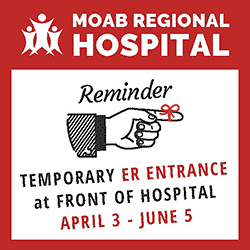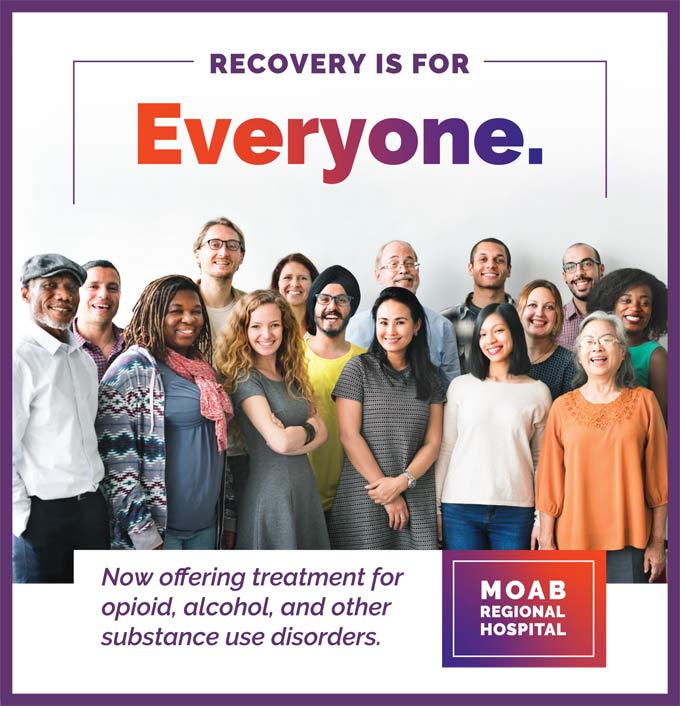|
|
HEALTHY HAPPENINGS - April 2023
|
Would You Be Open to Considering an Evidence-Based Approach?
by Ray Andrew, MD
|
When Peter was found to have an elevated prostate specific antigen (PSA), he saw a urologist, underwent biopsy, and was diagnosed with prostate cancer. Following removal of his prostate, he heard the words every person with cancer likes to hear: “We got it all.” Perhaps paradoxically, if you’ve ever had cancer, you know that we doctors (unintentionally, of course) talk out of both sides of our mouths: On the one hand, we say, “We got it all” while admitting in the next breath, “We need to keep checking in case we didn’t get it all.” The latter advice comes from the realization that, ironically, many people with cancer end up passing away 5 to 10 years after being cured of their disease. For this reason, standard treatment for many cancers is to undergo chemotherapy and/or radiation after the tumor is gone to reduce (although not eliminate) the risk of it coming back.
Unfortunately, this approach ignores basic cancer physiology. In order to grow, cancer needs nutrients. Nutrients are carried to organs and tissues throughout the body—including to tumors—by blood vessels. Whereas it is important to treat the tumor itself, we have not eliminated the cancer from the body if cancer cells have already left the tumor through the bloodstream. We call these “circulating tumor cells” (CTC). Nearly 8,000 peer-reviewed medical journal articles have been published about CTC, mostly within the last 15 years, yet most doctors have never heard of them. Whereas we can run a PET scan to look for tumors elsewhere in the body, it takes a lot of tumor cells in one place to show up. For this reason, a PET, CT, or MRI scan is a poor way to determine whether cancer has already spread beyond the tumor site. None of these tests will show the spread until 1-2 billion cells are present in any single location. In the medical world, “cure” is defined as being tumor-free for five years. But it takes 8 to 10 years for one cancer cell to divide enough times to create a mass that is visible on a scan. In other words, the victory lap is almost invariably five years too soon.
Such was the case with Peter. The urologist, Peter, and I were all happy as we saw one PSA test after another come back zero…until it didn’t. Fifteen months after surgery, his PSA climbed to 0.25. This is not supposed to happen. He went back to the urologist, who recommended radiation of the area where his prostate used to be. This did not make sense. He had had “clean” surgical margins at the time his prostate was removed, so the likelihood of the tumor having spread right next to where the prostate used to be was not great. And when it comes to radiation and other procedures that carry significant risks of their own, doctors have to be careful not to recommend them without fairly good confidence they are going to work.
As predicted, Peter’s PSA kept climbing, untouched by the radiation damage to the pelvic floor, bladder, and rectum. As predicted, too, the PET scan could not demonstrate where in the body the new tumor or tumors were located because they were too small. At this point, there was nothing more to do. Once Peter’s PSA reaches a whopping 10.0, he was told, he will be eligible for a castration drug that will suck the life out of him but hopefully buy him another 12 to 18 months of breathing on this planet.
Only in his 60s at the time, Peter did not think his time had arrived. Not satisfied with watching tumors overtake his body, he decided it was time for a different approach. Rather than focusing only on destroying cancer, he thought it made more sense to work on building health. Rather than doing things that impair the immune system in an attempt to kill cancer cells, he decided to do things that strengthen it while improving his overall health and function. Rather than waiting for tumors to enlarge enough to show up on imaging tests, he chose to look for CTC already in his bloodstream. As predicted, he was found to have CTC. He underwent a blood test to discover his tumor’s genetic strengths and vulnerabilities, as well as what natural and manmade substances are toxic to his cancer.
Following this approach, Peter is still alive and well seven years after we discovered metastatic prostate cancer. He is able to do everything he could do before treatment. He hasn’t lost any hair or spent any days in bed vomiting and exhausted. This is not a victory lap, but rather a celebration of Peter’s commitment to life, health, and vitality. Hopefully he will be cured in due time. Even if not, however, every additional year of quality life with his family makes his efforts worth it.
What if you had cancer? What if it was in your colon? Because your tumor arose in your colon, it will have characteristics like those of other people with colon cancer. As a result, it may respond to some of the treatments that have helped other people with colon cancer. But it may not. This is because you grew your own tumor. It is unique to you. It has specific combinations of genes that are different from everyone else’s colon cancer cells. In order to most effectively free yourself of cancer, you might want to identify those genes, as well as the substances that can stop them from working. Surprisingly, most doctors are either unaware of or uninterested in testing patients’ tumor genes, along with their sensitivities to vitamins, herbs, hormones, and drugs.
Fortunately, you don’t have to give up your current doctor and treatment in order to avail yourself of additional, more targeted treatment. You can do both. If, like Peter, you don’t think your time is up here, and you would rather not rely on the fingers crossed approach to cancer recurrence, call (435) 210–0184 to see if a more individualized approach would be helpful. It’s hard enough to have cancer. You don’t need to be miserable too. Those who choose a whole-body approach are often surprised to discover that they can become even healthier than they were before their diagnosis.
|
Alcohol Awareness Month
By Dr. Paula Cook
|
“March is National Nutrition month! The Academy of Nutrition and Dietetics invites everyone to learn about making informed food choices and developing healthy eating and physical activity habits.
How should you build a healthy meal and fuel your body? We read a million things online about what is healthy and what is not, and all the information seems contradictory. However, building a healthy meal really is simple! The following are some easy steps from Janel Arbon, a Registered Dietitian Nutritionist at Moab Regional Hospital, to start eating healthy.
First off is portion control. Controlling your portions and the amount of food you eat is essential to developing healthy eating habits. Start with a nine or 10-inch plate to help you watch your serving sizes. By managing your calorie intake, you can prevent over-eating and gaining weight.
The second is vegetables! Fill half your plate with non-starchy vegetables; these could be raw or cooked! You might try steamed broccoli and carrots or a spinach salad with bell peppers, cucumbers, and tomatoes. Instead of using heavy store-bought salad dressings, add a squeeze of lemon or lime or add vinegar and olive oil to your salads. Non-starchy vegetables are high in vitamins and minerals, low in calories (to help you maintain weight), and high in fiber, so they are filling and helpful to your digestive system!
Third, find a healthy protein to make up ¼ of the plate. Choose a lean source of protein, which can be plant-based (tofu) or animal based. Lean animal proteins include skinless chicken or turkey (breast or white meat preferred), fish, pork loin, 90% lean beef, or eggs. The way you prepare your protein makes a difference. Baking or grilling are preferred cooking methods over deep frying or frying. Proteins are made of building blocks called amino acids; these amino acids help build and repair muscles and bones and help produce hormones and enzymes, all while providing energy for you!
Fourth, add a carbohydrate or starchy food for the other ¼ part of your plate. When choosing carbohydrates, it is best to choose a whole grain.
Examples are brown rice, whole grain pasta, whole wheat roll, sweet potato, etc. Whole grains provide more essential nutrients that your body needs. Carbohydrates also provide the body with glucose, which converts to energy to help support your physical activity. Carbohydrates are typically your primary energy source.
Fifth, add some dairy. Low-fat dairy sources include an eight-ounce glass of skim or 1% milk, soy milk, and fat-free or low-fat yogurt. These choices provide you with calcium, which promotes healthy bones and teeth! Calcium also plays a role in blood clotting, muscle contractions, heart rhythms, and nerve functions.
Sixth, add some fresh fruit for dessert. Fruit provides essential vitamins to your  diet and is full of water which helps you stay hydrated. Fruit also has antioxidants, which help slow the aging process and reduce your risk for cancer. Fruit is also high in fiber, preventing constipation and lowering your risk for heart disease. diet and is full of water which helps you stay hydrated. Fruit also has antioxidants, which help slow the aging process and reduce your risk for cancer. Fruit is also high in fiber, preventing constipation and lowering your risk for heart disease.
Compliment your meal with a beverage by choosing water or a non-caloric drink. Choosing something non-caloric will keep you from getting unnecessary empty calories.
Lastly, avoid extra fat. Monounsaturated fats (like olive oil, avocados, and nuts) are healthier fat choices. They should be used over other high-fat foods. High-fat foods increase cholesterol levels and increase your risk for heart-related illnesses. Don›t use heavy gravies or sauces that add to your calorie and fat intake. Eating steamed broccoli is great, but topping it with a lot of cheese sauce makes it much less healthy. Instead, try sprinkling the broccoli with a bit of parmesan cheese. It is still delicious but doesn›t have excessive calories.
These steps will aid in creating a healthy eating routine. Moab Regional Hospital›s Registered Dietitian Nutritionist, Janel Arbon, can help you develop healthy habits that are sustainable and unique to your health needs. To make an appointment with Janel, ask your primary care provider for a referral.”

|
|
|
|
|
|
|
|
© 2002-2024 Moab Happenings. All rights
reserved.
Reproduction of information contained in this site is
expressly prohibited.
|
|